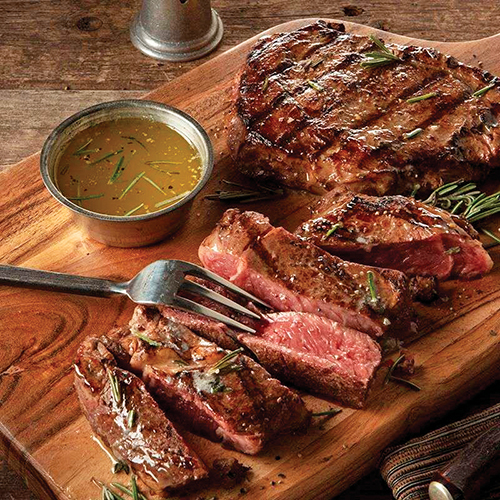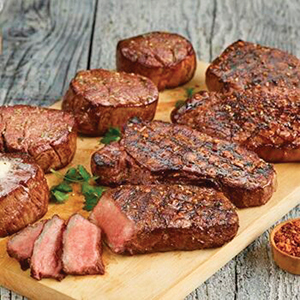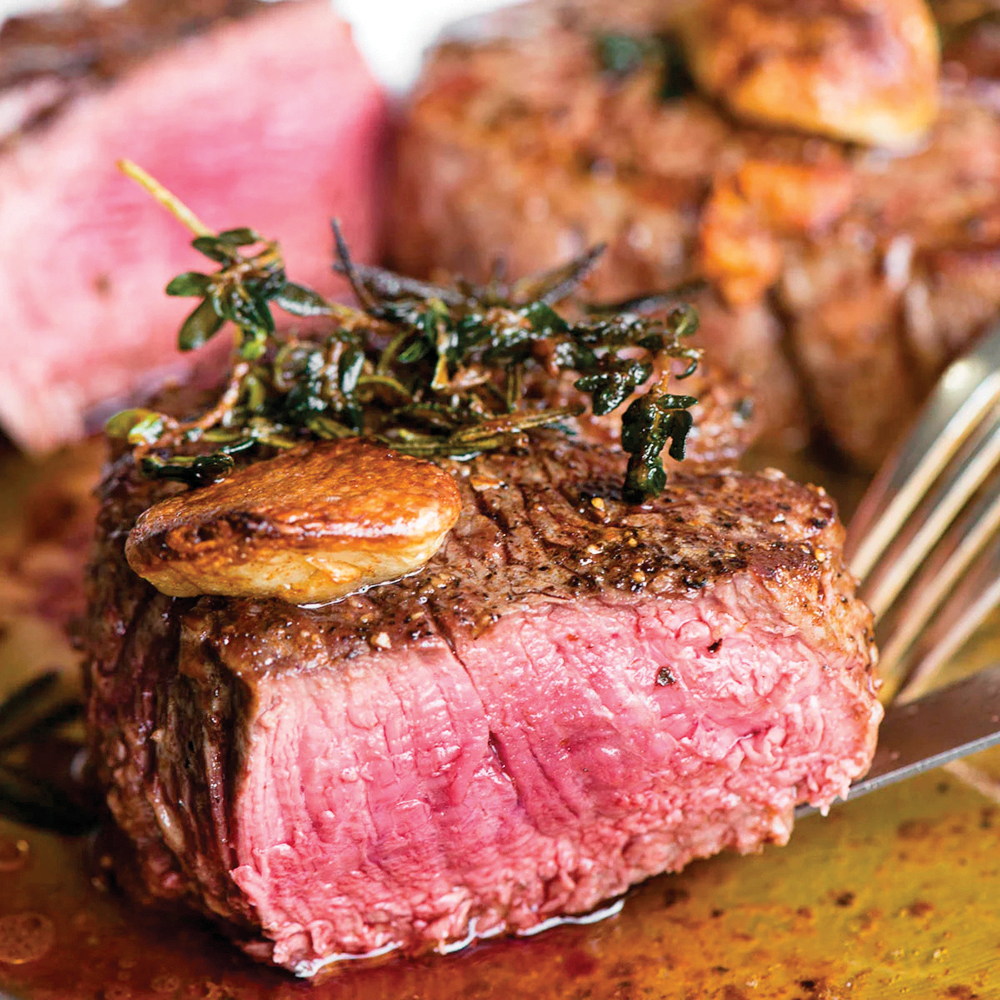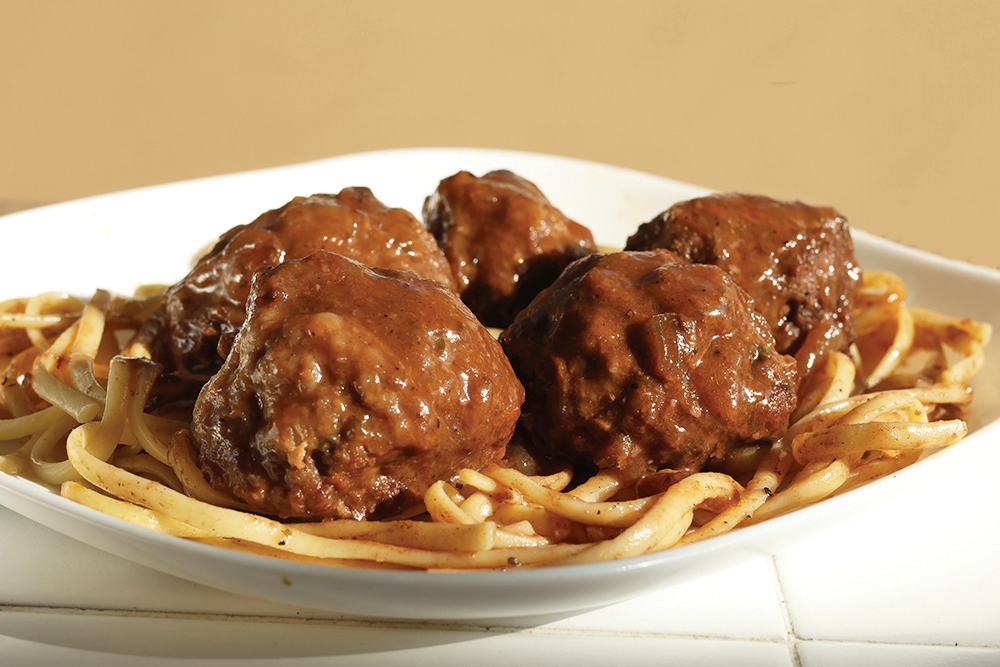
Rabbi Avidan Elkin of Teaneck has revived the lost art of cutting meat from the hind quarter and bringing it to kosher consumers, with Bisra Meat, located in Hackensack. You know those luxurious cuts of meat you hear about in the non-kosher world that sound so good–like filet mignon and chateaubriand? These cuts are kosher when the meat is cut the right way. Bisra has the most tender, tastiest meat you can eat, including many cuts that haven’t previously been available to kosher consumers.
“You might see a New York strip or filet mignon in your local kosher market, but I can guarantee you that’s not what you’re getting,” said Rabbi Elkin. “When you taste real New York strip or real filet mignon, it’s going to be massively shocking to know the difference.”

Most kosher meat today is cut from the forequarters of an animal and is not as tender as the hindquarters. There’s a thousand-year tradition of shechting kosher meat from the hindquarter. The process declined when beef was plentiful and relatively low in price. But that has changed.
“The cost of grain to feed cattle, the cost of fuel, transportation and all the costs of running and operating a farm are all getting more expensive,” said Rabbi Elkin. “The more complicated and difficult the economics of meat in general get, the more compelling it becomes to look for more creative ways to make kosher meat available.”

Producing meat from the hindquarter would require an investment that is too much of a burden for most supermarkets. In addition to the costs of setting up a structure for processing the meat, more skilled workers would be needed to cut meat. “There’s a lot more training and education that goes into focusing on the hindquarter, and there’s not very many people in the kosher world in the U.S. who are capable of doing that,” said Rabbi Elkin. “I’ve spent the better part of 20 plus years studying, learning and crafting my skills, and focusing on this, which is why we are able to do it.” All meat is soaked, salted and packaged at the Hackensack facility.
Rabbi Elkin developed expertise in cutting meat from the hindquarter in Israel, where he spent 10 years at Yeshivat Netivot Yosef in Mitzpe Yeriho. He received semicha in niquer (fore-and hindquarter treiboring) from Rav Yehudah Gia, shlita, the personal shochet of the former chief rabbi of Israel, Rav Mordechai Eliyahu, zt”l. That’s in addition to his semicha in shechita and lung checking from Rav Eliyahu Ben Chaim, shlita, of Queens, who serves as the Sephardi rosh yeshiva at Yeshiva University. Rabbi Elkin taught at YU from 2006 to 2015.
Rabbi Elkin sees interest in quality meat growing as kosher consumers become more knowledgeable and sophisticated. Most immigrants to the U.S. in the late 19th and early 20th centuries were poor and could not afford the best cuts.

“It was very easy for a lot of processors to change the terminology and take names from the hindquarter and throw them onto things from the forequarters,” he said. “It’s very disingenuous, but it happens because people are ill informed and not knowledgeable about what’s out there. So you could get away with calling cuts kosher filet mignon, kosher oyster, kosher strip steaks, because people didn’t know any better.” Rabbi Elkin said that as word gets out and people educate themselves, and avail themselves of a lot of information, that kind of deception is becoming more obvious and therefore harder to do.
Today’s kosher consumers have become more knowledgeable about and interested in better quality meat as they watch celebrity chefs and influencers, and dine out at high-end kosher restaurants. Just as kosher wine has evolved to meet increasing demand for a quality, sophisticated product, kosher meat is on a similar trajectory.

Another factor in the taste and texture of quality meat is aging. Beef muscle fiber is 72% water. Aging is a process of cooling that over time dries out the meat by encouraging the evaporation of moisture. With less water, meat sears and cooks faster. Unaged meat often steams on a grill before it browns or caramelizes. Aged meat develops a crust with grill marks more quickly while leaving the inside pleasantly rare (but not raw). Aging also makes the fibers in the meat relax, making it more tender. Bisra meat is sold with different amounts of aging time from 15 to 45 days, and is priced accordingly.
Bisra meat can turn anyone into the celebrity chef of their household. Order one steak or large variety packs through the Bisra website https://bisrakosher.com/shop or on their social media channels. The options on the website are updated every 30 minutes for an accurate display of supply, and notification if a cut is sold out. The meat is vacuum packed and frozen. It can be picked up on site at 75 Burlews Court in Hackensack, delivered locally by messenger, same day if ordered early enough, or shipped.
***
After interviewing Rabbi Elkin, and learning about the difference in meat from the hindquarter, and aging, I had to try a cut for myself. With company coming for Shabbat, I ordered a 15-day aged Pave steak, which is similar to Oyster steak, the cut I get often to grill. Bisra graciously gifted me with some ground beef as well, which was welcome as I had planned to make meatballs for that night’s dinner.

The meatballs were deliciously soft and tender but I can’t accurately ascribe that just to the meat, as meatballs have many other ingredients. The steak was unquestionably tasty, tender and juicy to a surprising degree since it is a lean cut and I didn’t use any oil. I used a dry rub and grilled it using a meat thermometer to test the temperature. I like steak rare but usually cook it slightly more to tenderize. Since I was making this steak for Shabbat, I wanted to slightly undercook it so I could heat up the steak a little on the hot plate. In the end, I left it room temp. The color, taste and texture were perfect. I usually provide steak knives when I serve steak but they were unnecessary; a regular knife cut easily. And although delicious on its own, I served the sliced steak with an optional herbed mayo dip I had made for another dish earlier in the week, which added yet another layer of flavor.
Order Bisra meat at https://bisrakosher.com/shop and follow on https://www.facebook.com/BisraMeats and https://www.instagram.com/bisrameats/












